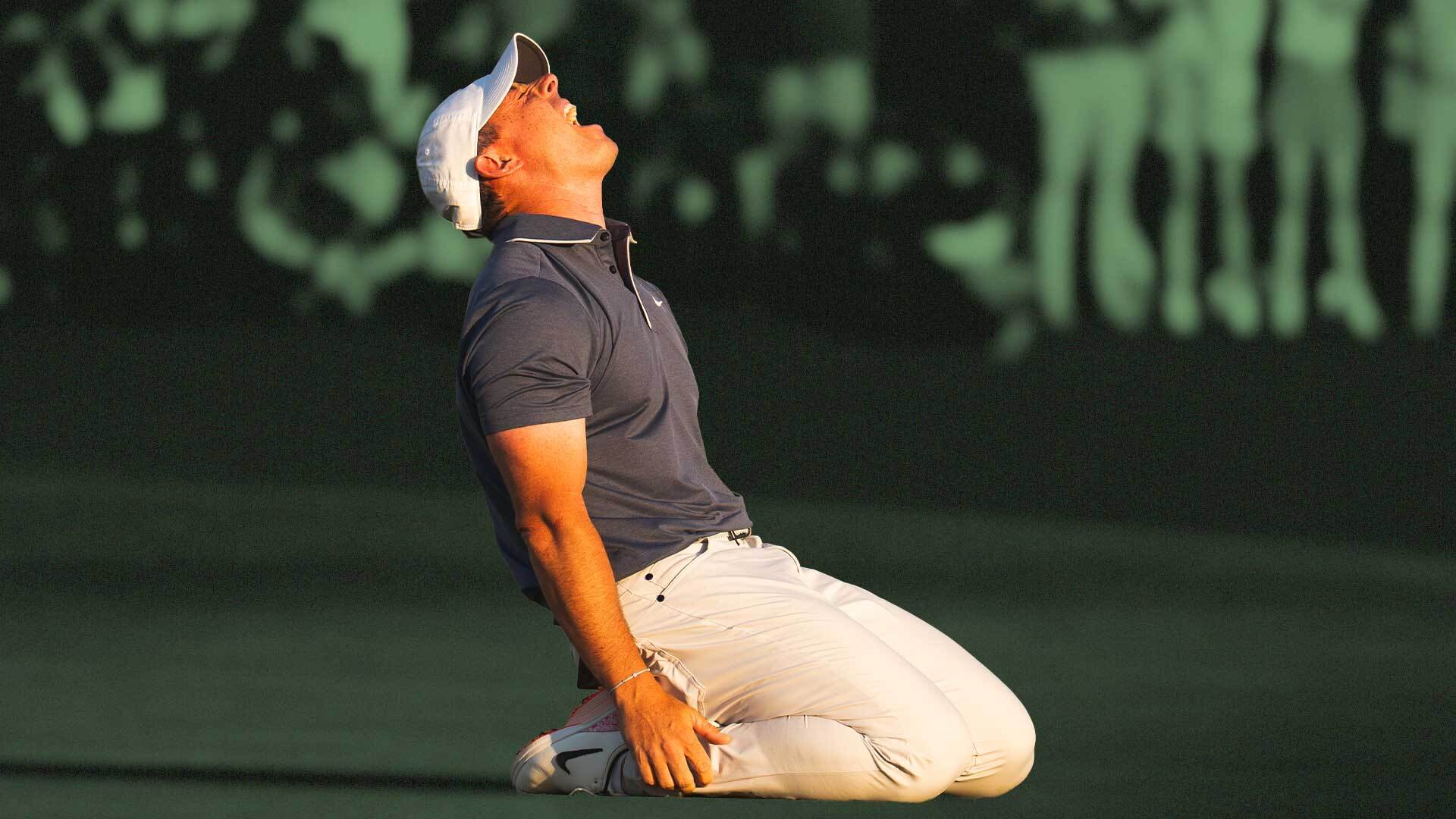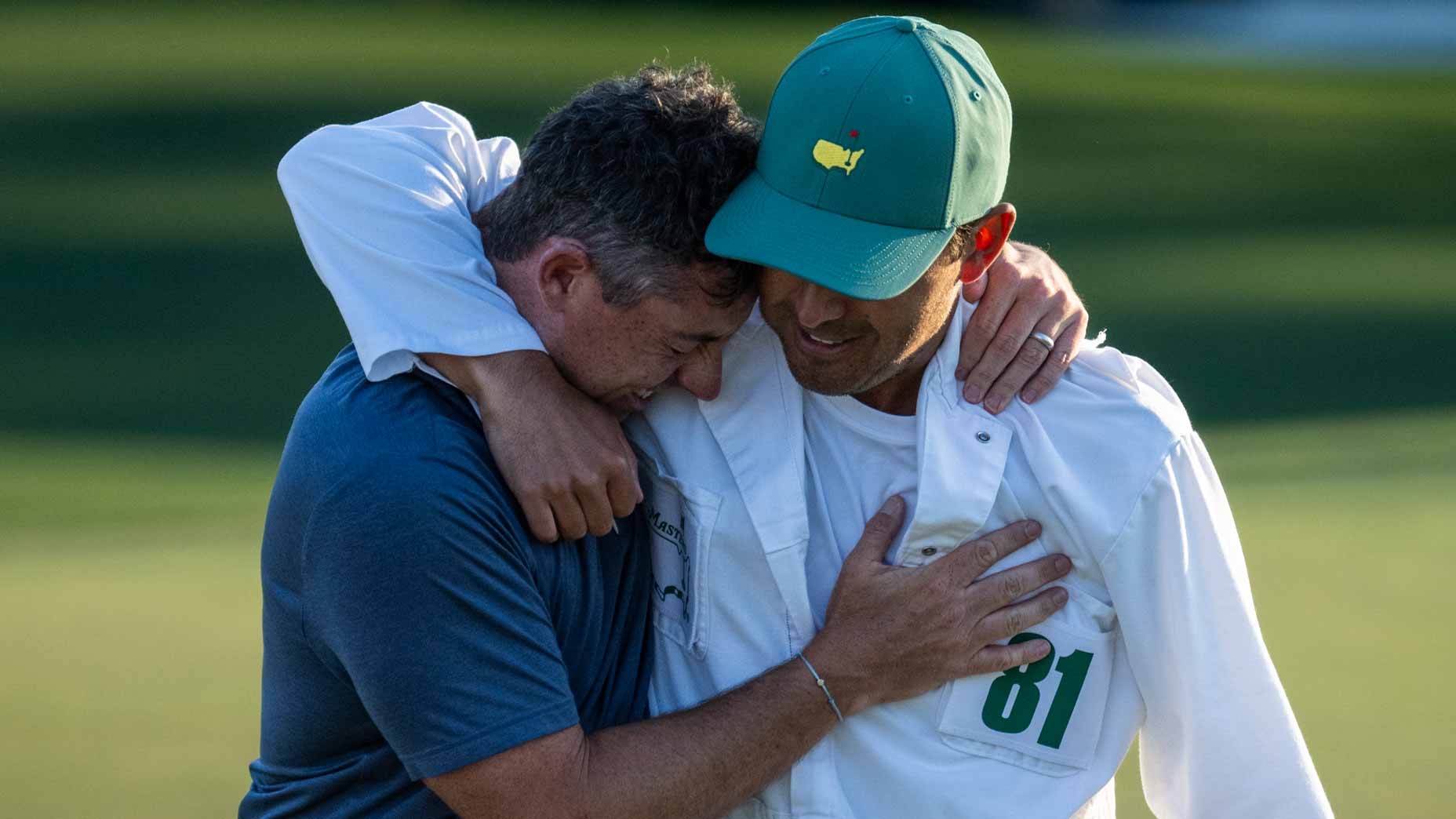One of the most interesting aspects of Tiger’s revival is that he’s going it alone, without Butch Harmon or Hank Haney or Sean Foley. He’s playing golf not by TrackMan or MacBook, but by hand. “My hands are telling me what to do,” he said at Arnold’s tournament in March. “That’s how I grew up playing, and it’s what I’m doing right now.” On the range at last week’s U.S. Open, you saw Woods drawing shapes in the air with his hands. The golfer as conductor.
Arnold himself said a thousand times that the best thing his father ever gave him was a grip, circa 1935. “He put my hands on the club and said, ‘That’s the way you hold it,'” Arnold, winner of the 1960 U.S. Open, once wrote. “He said it just once, but that was enough.”
Billy Burke won the marathon 1931 U.S. Open — five days, 144 holes, half of them in a playoff — with only eight fingers and (understandably) an unconventional grip. He’s the outlier. Broadly speaking: If the grip is the starting point of a sound swing, and the U.S. Open the ultimate test of a golfer’s overall soundness, it stands to reason that the best U.S. Open golfer ever would have a sound grip. Enter Ben Hogan.
Between 1940 and ’60, Hogan played in 15 U.S. Opens, and finished 10th or better 15 times, including four wins. No one has five, but in 1942, a war year when there was no official U.S. Open, Hogan won the Hale America National Open, an event stamped by both the USGA and the PGA of America. As a teenager in Latrobe, Pa., there was only one major for Arnold, what he then called the “national open.” Hogan’s Open. There’s a statue of his grip. It was perfect.
 Hogan, his grip and the Open came to mind for me recently while holding a new, beautiful quarterly magazine called The Golfer’s Journal. The cover artwork of the spring issue is the same piece you see on this page, Anthony Ravielli’s 1957 illustration (commissioned by Sports Illustrated) of Hogan’s meaty, muscular hands on a velvet cord grip. No glove. Hogan never wore one.
Hogan, his grip and the Open came to mind for me recently while holding a new, beautiful quarterly magazine called The Golfer’s Journal. The cover artwork of the spring issue is the same piece you see on this page, Anthony Ravielli’s 1957 illustration (commissioned by Sports Illustrated) of Hogan’s meaty, muscular hands on a velvet cord grip. No glove. Hogan never wore one.
I’m not dissing gloves here. Big Jack, who won four Opens, kept his glove on even while putting. But glove-free is a good look, and not just in golf. I love the old snaps of Mickey Mantle, in a home-game batter’s box, no earflaps, no elbow pads, no batting gloves. Your eye goes straight to his tanned, calloused hands on his white-ash Louisville Slugger. Powerized.
I didn’t wear a glove as a kid only because my golf was self-financed (mowing lawns, washing dishes, digging clams), and if I had an extra $5 I was buying a sleeve of shiny new Wilson ProStaffs instead of 25-cent water balls. Instead of a glove, I used pine tar.
Lee Janzen, glove-free winner of the 1993 and ’98 U.S. Opens, used sandpaper. He roughed up his grips (400 grit) as needed in the hotel room at night, to improve traction. Rocco Mediate, no-glove runner-up at Torrey Pines a decade ago, used sandpaper, too. Scott Simpson didn’t wear a glove when he won the ’87 Open, nor did Corey Pavin in ’95. Last year, flying home from the Open at Erin Hills, I saw Janzen on a Wolfgang Puck pizza line at O’Hare. Two equally tanned hands.
The last U.S. Open winner to win without a glove was the ironically named Lucas Glover, in 2009, at Bethpage. It rained that year pretty much for five straight days (Monday finish), and some guys were likely wearing two gloves, but not Glover. To my eye, he has one of the best-looking grips in the game. It’s one knuckle strong and he can hit perfect trap-draw 7-irons all day long.
Glover guesses there were glove makers somewhere in his family line, noting that the Ken Follett character Jack Builder was a builder. (He’s a reader.) But Lucas has worn exactly one golf glove in his life.
“I remember hitting balls at River Oaks in Houston when I was 13 or 14 with Dick Harmon and my grandfather, and I clearly hit too many,” Lucas wrote to me recently. “My hands were beginning to blister and bleed. Old-schoolers that they were, they never said to stop. They went in the shop, found a glove and proceeded to cut the fingers off it. At least you’ll be able to feel the club in your fingers still, they said. I’d never worn one before and haven’t since.”
I asked him about Hogan’s grip and Ravielli’s drawing of it.
“Hogan’s grip is iconic,” Lucas said. “Just think about what those hands went through. They were meant to be on that club and they deserve to be on that club.”
Yep. Take a look at Hogan’s grip in that drawing. You can practically see his hand muscles pulsating, right through his flesh and skin.






